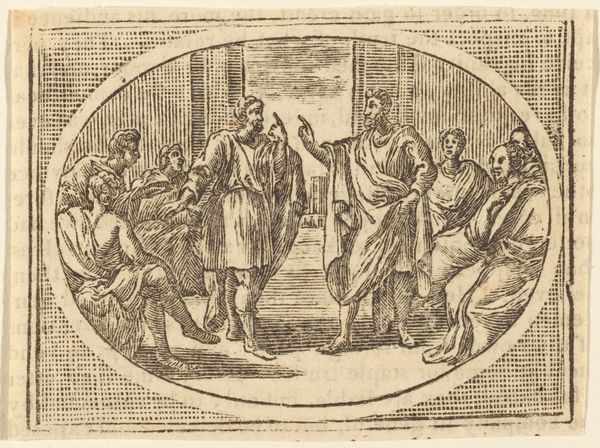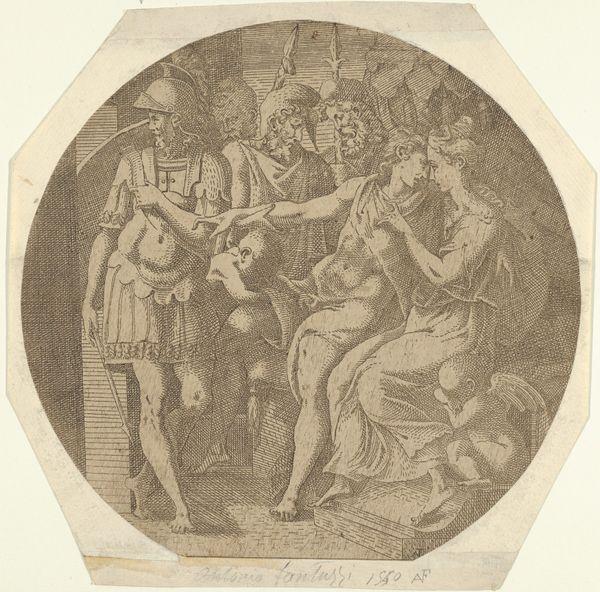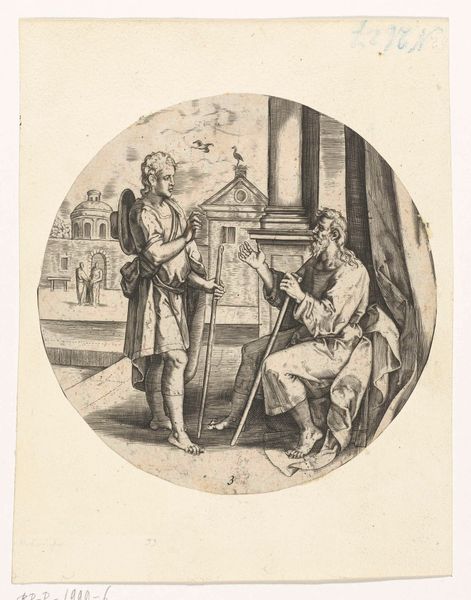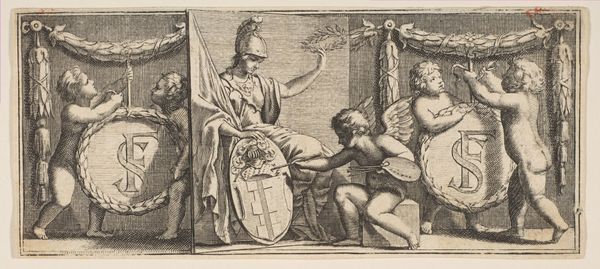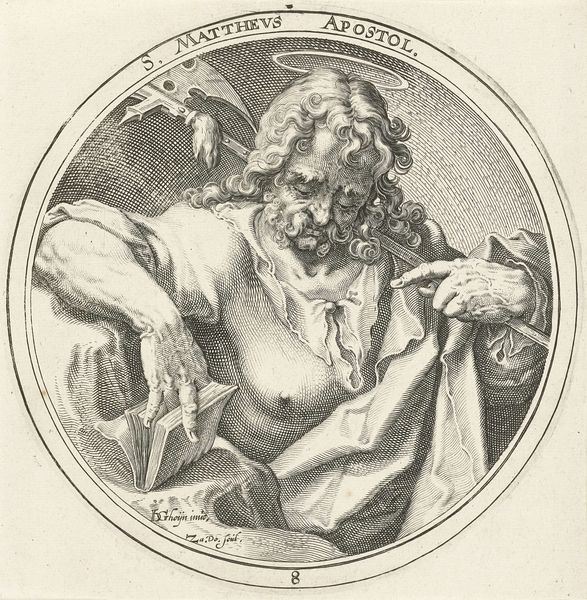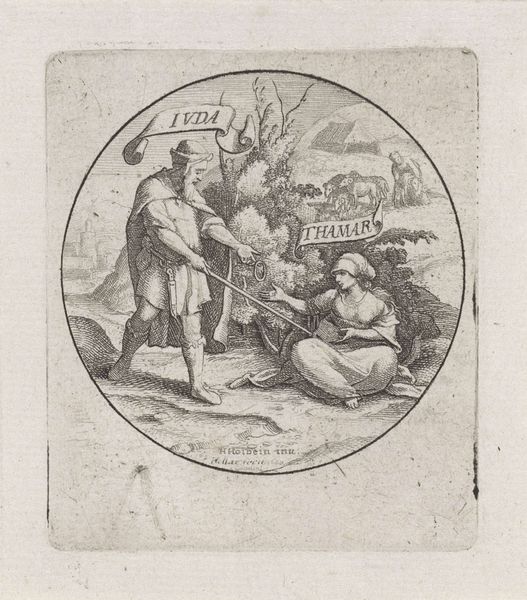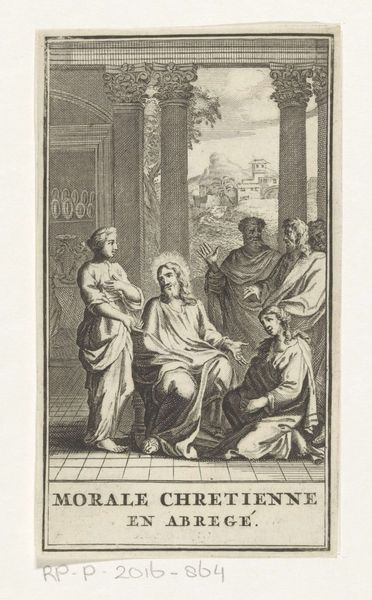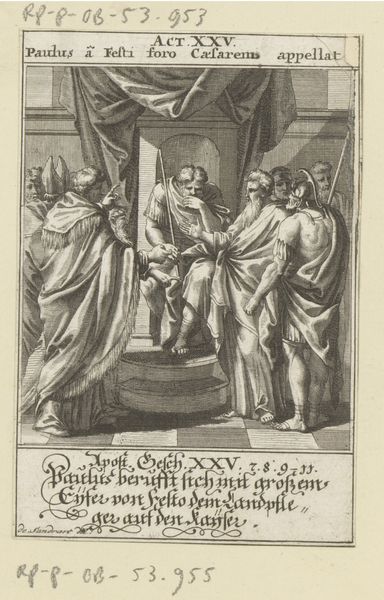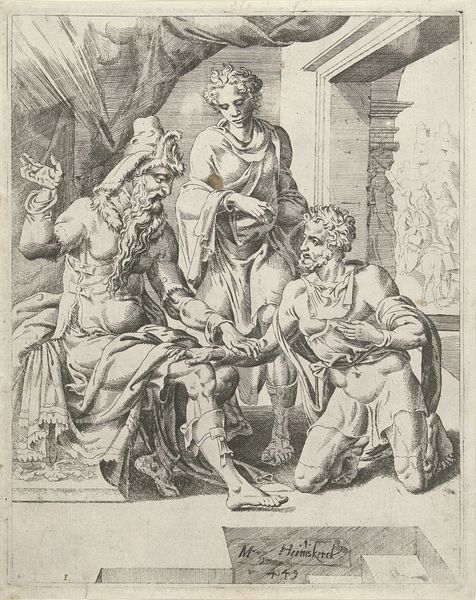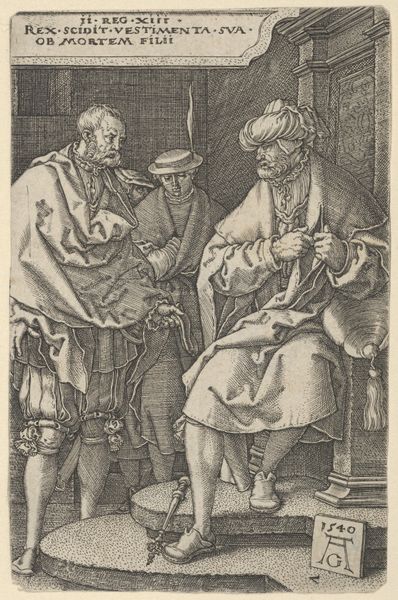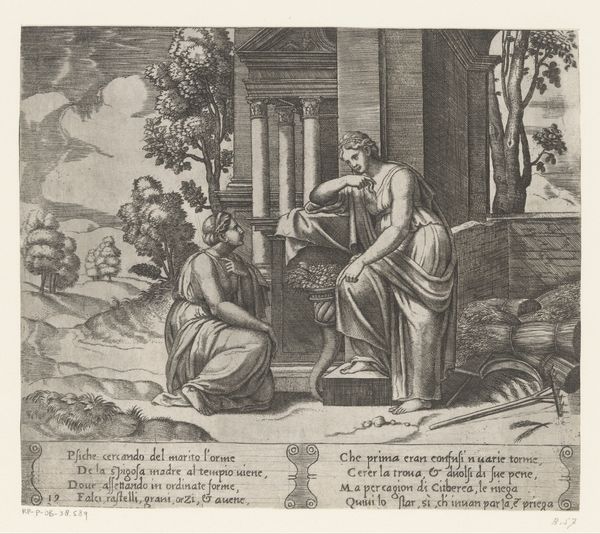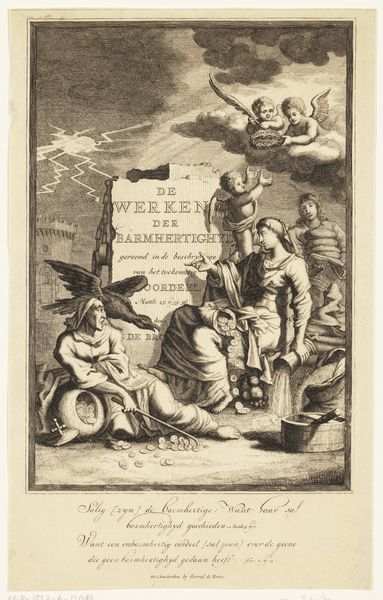
print, engraving
# print
#
old engraving style
#
figuration
#
11_renaissance
#
history-painting
#
northern-renaissance
#
engraving
Copyright: Rijks Museum: Open Domain
Georg Pencz made this etching, "Christus is naakt en wordt gekleed", in the 16th century using a metal plate and acid. It’s a fantastic example of printmaking – an art form that democratized images. The image’s fine lines and tonal range come from the careful process of etching. Pencz would have covered the plate with a waxy, acid-resistant ground, then scratched his design into it. When dipped in acid, the exposed metal would be eaten away, creating grooves that hold ink. This is intaglio. Printmaking was essential to spreading ideas during the Reformation. Pencz, associated with radical spiritualist factions, utilized print's reproducibility. The clothing being offered to Christ speaks to labor and the textile industry. The medium itself points to a wider social and economic context – the rise of a merchant class and the demand for affordable art. By focusing on the materials and making of this etching, we see how Pencz engaged with the social and religious issues of his time, blurring the lines between art, craft, and political expression.
Comments
No comments
Be the first to comment and join the conversation on the ultimate creative platform.


